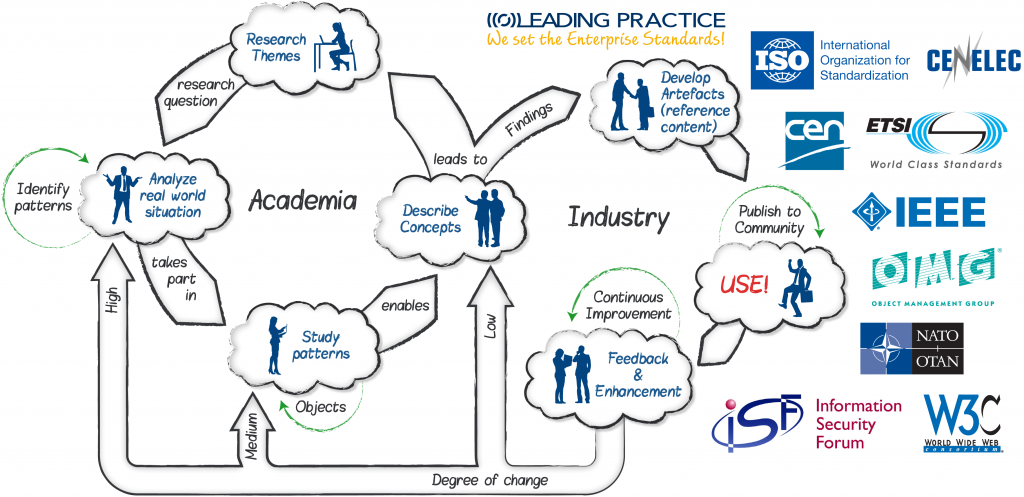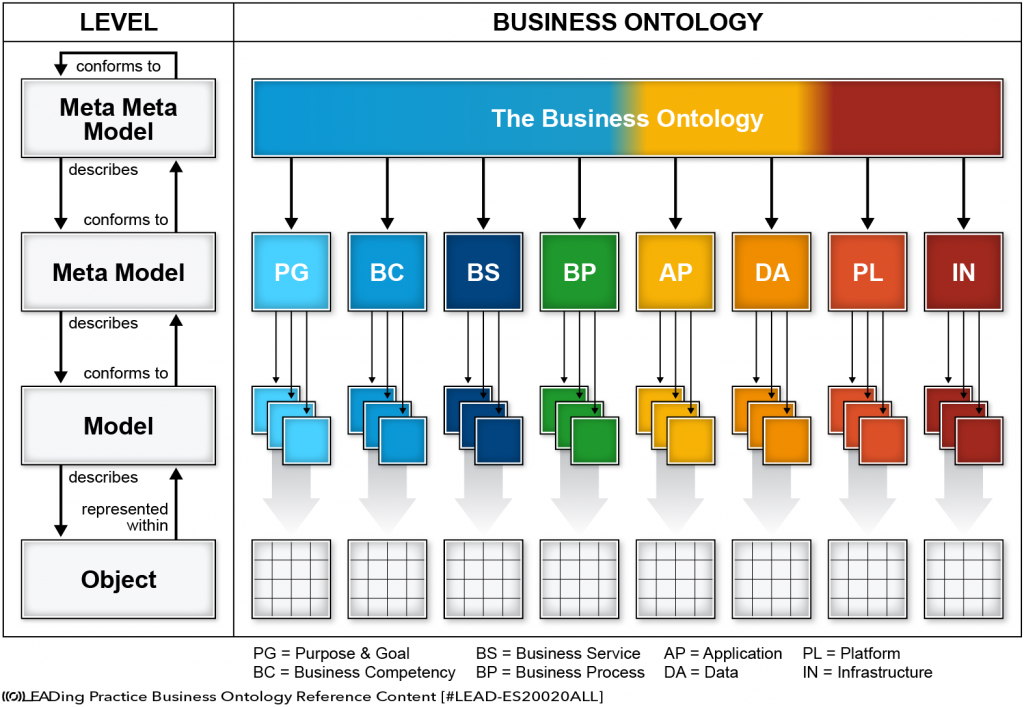
The Business Ontology presented in this publication has taken the Global University Alliance members over a decade to research and develop, with hundreds of ‘man years’ involved to create the product introduced in this paper. This paper provides an overview of he business ontology research and analysis done and elaborates on its development and adaption journey. This research paper therefore has the aim to provide an overview of the research and analysis that has been done around the subject of Business Ontology. It does so by firstly defining what Ontology means in the context of this research after which it elaborates on the chosen research approach. It than describes how the Business ontology is a part of formalizing a Domain Ontology. Followed by a historic overview of the Business Ontology development adaption and how the business ontology is used to develop enterprise and industry standards. The Overview of the Business Ontology Research & Analysis paper than concludes with mentioning the main research team members.
As ontology formally represents knowledge as a set of concepts within a domain, and the relationships between those concepts, it can be used to model a domain and support reasoning about concepts. The Global University Alliance has used the concept of ontology as both a shared vocabulary and the very definition of its objects and concepts. In order to go the next steps and fully use the potential of its ontology.
The Global University Alliance (GUA) is an open group of academics with the ambition to provide both business and academia with state-of-the-art insights. Through its ties with the LEADing practice community, which includes large firms and governments, the GUA is able to evaluate and valorize its scientific output. Since 2004, the members of the GUA strive for a continuous improvement of their expertise through the research, comparison, analysis and development of Best and LEADing Practices in Business. Throughout this process, the GUA built its own implicit ontology that revolves around its expertise of Best and LEADing practices.
This is where the Global University Alliance (GUA) has developed a unique collaborative process between research and industry. After 5 years of already working together, the GUA was founded in 2004 as a non-profit organization and today (September 2015) they are an international consortium consistent of over 450+ professors, lecturers and researchers whose aim it is to provide a collaborative platform for academic research, analysis and development. As illustrated in figure 1, they do this through defining clear research themes, with detailed research questions, where they analyse and study patterns, describe concepts with their findings. This again can lead to additional research questions/themes as well as development of artefacts which can be used as reference content by practitioners and industry as a whole. What the GUA also does uniquely is the collaboration with standards bodies like:

All ontologies have a controlled vocabulary as a foundation. (Lassila & McGuinness, 2001) As the business ontology is an extensive ontology that has the ambition to cover all aspects of business (as opposed to academic ontologies), its terms are organized in a top-level domain and multiple intersecting subdomains (e.g., Business Competency, Business Process, Infrastructure). Figure 2 shows that the business ontology’s top-level has been formalised into the following four levels:

The first GUA Business Ontology research was published within the LEADing Practice concepts in December 2004 and today resulted in the Business Ontology Framework. The Initial Business Ontology modelling and architecture principles yielded the attention of mayor software vendors like SAP AG, IBM, Software AG (IDS Scheer and ARIS). Some of these vendors used our entire conceptualization, while others adapted the Business Ontology meta-model or specific concepts e.g. eXtended BPMN concepts. IGrafx, which is a new player in the extended process modeling field, currently incorporates our modelling aspects into their methods and or meta-models.
Below is a short overview of the fast adoption of GUA-concepts by industry:
The recent Business Ontology workgroup within the Global University Alliance, has adopted the concept of holistic Business Ontology Frameworks, as it identified the necessity of introducing such a framework into today’s enterprises through the LEADing Practice community. In order to develop this Business Ontology Framework, the GUA recently started looking for more mature business and enterprise ontologies that could provide them with state of the art semantics they could found their practices on. These practices should promote new ways of thinking, working and modelling about value identification, creation, and realization through the use of Business Ontology.
The Business Ontology concepts in the framework should provide sound semantic foundations for best and LEADing practices in different domains (e.g. process, service, value, information). The concepts and practices will be shared and published as an open standard in the LEADing Practice community. Thereby enabling all academics and practitioners in the community to build on common leading principles to identify, create and realize value, competitive advantage and agility to deal with future challenges. To realize this vision, the GUA alliance reaches out to all business and Business Ontology researchers to contribute to the consolidation of academic findings in a research-based Business Ontology Framework that can be used by industries and universities alike.
Based on the Business Ontology various Enterprise & Industry Standards have been developed. The standards are both agnostic and vendor neutral and are built on repeatable patterns that can be reused/replicated and thereby implemented by any organization, both large and small, regardless of its products/services or activities. All together describing the set of procedures an organization needs to follow in order to replicate the ability to identify, create and realize value in the specified area/subject. The Standards have been developed in the following ways:
We realize that organizations apply various method and approaches, therefore we have ensured that based on the business ontology all our Industry Standards have a structured Way of Thinking, Working, Modelling, Implementation and Governance. To ensure full integration to other method and approaches within an organization, the industry standards have the business ontology and with it the semantic concept build in that allows for the industry standards meta objects to be reused and thereby applied.
This includes applying the standards to:

Creating the ability to use the Ontology and Semantics to develop standards with reference content, making it easier, less time consuming and cheaper to apply object descriptions, relations and rules to enable Enterprise Modelling, Enterprise Engineering and Enterprise Architecture. Developing whole new standards that are fully integrated and standardized based on a sound Business Ontology. While multiple standards have been developed linked or based on the business ontology[2], for an overview of the the standards developed in the LEADing Practice standard body, which is the GUA standardization arm please visit the referenced link[3].
If you are interested in or would like to contribute to the Business Ontology Framework, do not hesitate to contact the coordinator.
Research Coordinator:
Professor Wim Laurier
Saint-Louis University Brussels & Ghent University, Belgium
LEADing Practice Coordinator:
Georg Etzel
LEADing Practice, Co-CEO
Global University Alliance Coordinator:
Professor Mark von Rosing
Head of Global University Alliance, Denmark
The members involved in this work have been a team that includes academics, researchers and analysts: